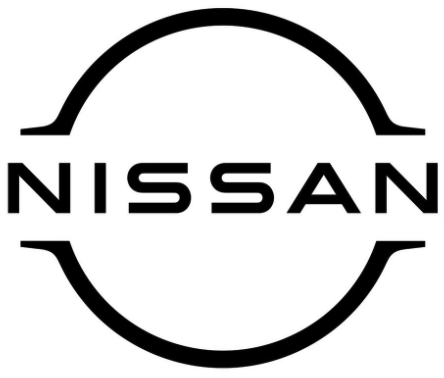5 Tips to Provide Contextual Feedback to Creative Agencies
Providing feedback to creative agencies can be a tricky process, but it is an essential part of any successful and mutually beneficial business relationship. The key is, to be honest, precise, and professional in order to ensure that the...

Providing feedback to creative agencies can be a tricky process, but it is an essential part of any successful and mutually beneficial business relationship.
The key is, to be honest, precise, and professional in order to ensure that the agency can provide the best creative output. Here are a few tips on how to navigate the delicate path as a client and provide contextual feedback to creative agencies. But first, let us understand what ‘contextual feedback’ is.
Contextual feedback is a way of encouraging improvement that focuses on the positive rather than the negative. It is intended to help a person or organization identify areas of strength and areas that could be improved while providing valuable insight and guidance. Contextual feedback should be honest but stated in a way that is respectful and non-judgmental. It should be specific, with concrete examples and suggestions for improvement, rather than vague criticism.
For example
Feedback from the client: ‘I don’t like the pink colour, please explore a different one”.
It is unclear from the above feedback why the pink colour is not preferred. Is it the visual appeal or does it not align with the overall concept? The client can provide more context, such as – ‘since the target audience is predominantly male, a different colour would be best’.
This feedback explains why it is not advisable to use pink colour and provides enough reasons for the agency to explore alternative options.
A Client’s Guide to Providing Constructive, Contextual Feedback to Creative Agencies
1. Understand the creative process
In the marketing world, things move so fast that clients often miss the most important step, which is understanding how the creative process works, and how they can play a crucial role in steering their agency in the right direction to achieve the desired result.
The creative process is a two-way collaboration between clients and agencies.
Each agency has its own way of working, so it is recommended to set clear expectations at the start of the project. Here are a few tips to better understand the creative processes:
Ask the agency to explain the process, including the steps involved and the expected results. Review the agency’s portfolio and case studies to understand how successful projects were created in the past. Request regular updates throughout the project, including progress reports while maintaining the balance between obtaining the correct information and allowing the agency enough free rein to do their work. Set open and clear communication channels between you and the agency to understand what works and what doesn’t.Clients who understand the creative process are more likely to trust the agency and its recommendations, leading to a more effective working relationship.
2. Set aside any personal biases
More often than not, we rely too heavily on intuition and use flawed reasoning when it comes to providing feedback. This limits creativity, damages working relationships and results in subpar work. To provide contextual feedback as a client, it is important to have an expansive mindset. Here are some tips for adopting the right approach:
Before jumping to a conclusion, read the brief and develop a good understanding of the project objectives to understand the ‘why’ of the project. Keep your target audience in mind while reviewing the creative work and always reason what will and will not work. Set aside enough time for providing feedback and ask your agency to take you through their work to gain a better understanding of the reasoning and thought behind the decisions that were made. Understand trends, where the market is headed, and whether the creative work is relevant in the next few years.When clients take the time to understand the agency’s work, it shows the agency that they are invested in the project and lead to enhanced collaboration between the client and the agency.
3. Be Specific
The lack of clear client feedback can be challenging for agencies, as it can lead to misunderstandings and miscommunication, ultimately causing projects to fail.
Providing specific feedback as a client is a work of art. It comes with constant practise and involves being clear and concise about what you want to communicate. Here are a few steps that can help you be specific with your feedback:
Always give credit where credits are due i.e. appreciate what you liked and why it works well. This helps the agency understand that they are in the right direction. Be problem-focused and identify the specific issue you want to address. Be clear about what your goals are for the project. Agencies might not have all the background or context. So, if necessary, give them a sense of how the issue affects the target audience and the rest of the business. Provide specific examples to support your feedback, this will help the agency understand your perspective and make it easier for them to address your concerns.By providing specific feedback about what they like and don’t like about the creative, clients can help the agency create work that better meets their project needs and expectations.
4. Be professional and timely
Tone and timeliness are often ignored aspects in providing contextual feedback. Harsh tone and inconsistencies can have far-reaching consequences such as damaged relationships, a hostile work environment etc.
Providing feedback in the right way is as important as providing the right context. The following tips will help you navigate tone and be a professional.
Maintain a professional and respectful tone, even if you are providing critical feedback. Avoid using negative language or personal attacks. Make sure you give yourself adequate time and let your agency know when you will respond. Consolidate your feedback and set an internal process to collect feedback from your team and internal departments to avoid back-and-forth and duplication. Learn how BugHerd can help you gather feedback from your team effortlessly and on time.Clients who are respectful of their agency’s work and time are more likely to succeed and form strong working relationships. It ensures that they are clear, and focused on moving the project forward.
BugHerd is the world’s leading visual feedback and bug-tracking tool for websites. Globally, thousands of marketing teams and agencies love it for the ease and collaboration it brings to their website projects.
BugHerd has revolutionised the way clients and agencies collaborate on website projects. It is perfect for anyone involved in web design and development. With BugHerd your team can easily pin feedback directly to specific elements of the web pages. It acts as a transparent layer on the website that is visible only to you and your agency. Submitted feedback and bugs are sent to a central Kanban task board that provides all stakeholders with full visibility of the project. Reducing back-n-forth and missed feedback.
BugHerd provides a 14-day free trial. Sign-up today and create a test project using any website URL. It is easy to use and requires no credit card.
5. Always mention what you like
It’s easy to get caught up in what needs improvement and to overlook what’s being done well. It’s important to make a conscious effort to focus on both the positive and the negative aspects when providing feedback. This helps to create a more balanced and contextual feedback experience. Here are some recommendations on how to adopt a positive approach:
Mention what you like and provide examples such as ‘the use of visuals during the creative presentation made the information easier to understand’. Be sincere and make sure your feedback is genuine and that you truly appreciate what you are praising. Always credit where credit’s due and personally thank the team for their great work to boost morale and confidence.Case Study: How BugHerd Emerged as The Main Mode of Communication Between Nissan’s Digital Marketing Team and Their Agency

“The ‘automagical’ screenshot functionality in BugHerd removes ambiguity and time to explain issues. Lifesaving.”
Ross Dougall
National Manager of Customer Experience at Nissan Australia
Nissan Australia, a globally recognized auto brand, has a high-traffic website that requires constant and timely content updates.
Several of Nissan Australia’s online assets are updated and produced by its internal Digital Marketing team in partnership with a leading web agency. The comms consists of a combination of email trails, Jira tickets, WIP documents, and phone calls.
The outdated and broken feedback system was impacting deliverables and overall performance. It was time to streamline the feedback process and bring all stakeholders on the same page. Read the full case study here.
Giving or receiving feedback is never easy. The key is to focus on the message and the learning that can come from it, rather than the person delivering it.
To help ensure that the feedback is helpful, it should be specific and objective, provide context and background information, and be delivered in a respectful manner that allows for contextual dialogue. The feedback should also be actionable, providing steps or guidance to help the agency progress.
Ultimately, feedback can be an invaluable tool to steer your agency’s work in the right direction and establish strong relationships.

 Kass
Kass 











![How to Write Professional Yet Kind Rejection Letters [4 Templates]](https://blog.hubspot.com/hubfs/rejection-letter.jpg#keepProtocol)





















